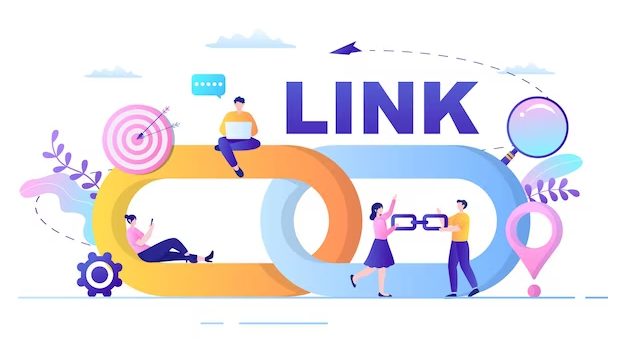SEO campaign refers to a series of actions and strategies that aim to improve the ranking of a website.
SEO campaigns can help you increase your organic traffic, leads, sales, and revenue from your website.
But how do you launch a successful SEO campaign? What are the steps and stages that you need to follow? In this article, we will show you how to launch a successful SEO campaign in 6 steps. We will also provide some tips and best practices for optimizing your SEO campaign.
Step 1: Define Your SEO Goals and KPIs
Firstly, define your SEO goals and KPIs. SEO goals are the specific and measurable objectives that you want to achieve with your SEO campaign, such as:
- Increase organic traffic by 50% in the next 6 months
- Generate 100 new leads per month from organic search
- Boost online sales by 20% from organic traffic
- Improve brand awareness and authority on search engines
SEO KPIs are the key performance indicators. They help you track and measure your progress and results toward your SEO goals, such as:
- Organic traffic: The number and quality of visitors that come to your website from search engines
- Ranking: The position and visibility of your website on search engine results pages (SERPs) for your target keywords
- Organic conversion: The number and percentage of visitors that take the desired action on your website. Such as sign up, download, buy, etc.
- The Revenue: The amount and value of money that you earn from your organic traffic
You need to define your SEO goals and KPIs to align your SEO campaign with your business objectives, optimize your SEO performance and results, and track and evaluate your SEO success.
Step 2: Conduct Keyword Research

Secondly, conduct a thorough keyword research. Keyword research is the process of finding and analyzing the words and phrases that your target audience uses to search for information, products, or services online. In addition, it can help you discover the search intent, demand, and competition for your keywords, and optimize your content accordingly.
Some of the points you should tell yourself when conducting keyword research are:
- What are the main topics and categories that relate to your business and industry?
- Research the specific keywords and phrases that your target audience uses to search for those topics and categories.
- Understand their search volume, difficulty, and opportunity for those keywords and phrases.
- What are the types, formats, and lengths of content that rank well for those keywords and phrases?
- What are the gaps and opportunities that you can exploit with your content and keywords?
You can use tools like Google Keyword Planner, Moz Keyword Explorer, or Semrush Keyword Magic Tool to conduct keyword research easily.
Step 3: Create and Optimize Content
Thirdly, create exceptional content and optimize it with mastery. Content is the core element of any SEO campaign. Because it helps you attract, engage, and convert your target audience. Content can be in various formats, such as blog posts, e-books, infographics, videos, podcasts, etc.
You need to create and optimize content that matches your brand’s voice. And delivers your message and value proposition. You need to create content that is persuasive for your audience, using various content optimization techniques, such as:
- Keyword optimization: Use your target keywords and phrases in your content. Such as title, headings, body, URL, etc., but avoid keyword stuffing and over-optimization
- Title tag optimization: Create a catchy and descriptive title tag for your content, using your main keyword. Remember to keep it under 60 characters
- Meta description optimization: Create a brief and enticing meta description for your content. Use your main keyword and a call to action, and keep it under 160 characters
- Heading optimization: Use headings and subheadings to organize your content into sections and sub-sections.
- Image optimization: Use relevant and high-quality images to complement your content. Moreover, make them more appealing and informative, and optimize them using alt text, file name, size, format, etc.
- Link optimization: Use internal and external links to provide more information and value to your audience, establish your content credibility and authority, and optimize them using anchor text, URL, etc.
You can use tools like Yoast SEO Plugin, Surfer SEO, or Clearscope to create and optimize content easily.
Step 4: Build and Earn Links

Fourthly, build and earn backlinks. Links are the HTML elements that connect your content to other web pages or resources. Links are one of the most important ranking factors for search engines, as they indicate the popularity, relevance, and trustworthiness of your content.
You need to build and earn links for your content from authoritative and relevant sources, using various link-building tactics, such as:
- Guest posting: Guest posting is the process of writing and publishing content on other websites or blogs that are related to your niche or industry, and linking back to your content
- Skyscraper technique: The Skyscraper technique is the process of finding and improving the top-ranking content for your keywords, reaching out to the websites or blogs that link to that content, and asking them to link to your content instead
- Broken link building: Broken link building is the process of finding and fixing the broken links on other websites or blogs that are related to your niche or industry, and suggesting your content as a replacement
- Resource page link building: Resource page link building is the process of finding and contacting the websites or blogs that have resource pages that are related to your niche or industry, and asking them to include your content as a resource
You can use tools like Ahrefs, Moz Link Explorer, or Majestic to build and earn links easily.
Step 5: Promote and Share Content
Fifthly, promote and share your exceptional content. Content promotion and sharing is the process of spreading and amplifying your content reach and impact, using various channels and platforms, such as website, blog, email, social media, etc.
You need to promote and share content with your target audience and influencers, using various content marketing tactics, such as:
- Email marketing: Email marketing is the process of sending and delivering your content to your email subscribers, using email campaigns, newsletters, etc.
- Social media marketing: Social media marketing is the process of posting and sharing your content on social media platforms, such as Facebook, Twitter, Instagram, etc.
- PR and influencer marketing: PR and influencer marketing is the process of earning and leveraging the coverage and endorsement of your content from authoritative and popular sources, such as media outlets, journalists, bloggers, influencers, etc.
You can use tools like Mailchimp, Buffer, or BuzzSumo to promote and share content easily.
Step 6: Track and Measure Content

The sixth and final step to launching a successful SEO campaign is to track and measure content. Content tracking and measurement is the process of monitoring and evaluating your content performance and results, using various metrics and tools.
You need to track and measure content to understand your content impact and value and provide you with feedback and suggestions on how to improve your SEO campaign.
Nevertheless, you can use tools like Google Analytics, Google Search Console, or Semrush to track and measure content easily.
Recap
Launching a successful SEO campaign is not a hard task if you follow these 6 steps:
- Define your SEO goals and KPIs
- Conduct keyword research
- Create and optimize content
- Build and earn links
- Promote
If you’re looking for professional assistance to enhance your website’s design, visibility, and overall performance, our web design services are here to help. We specialize in creating websites that not only look stunning but also adhere to the best practices for search engine optimization. Contact us today, and let’s embark on a journey to elevate your website’s natural rank and overall digital success.

